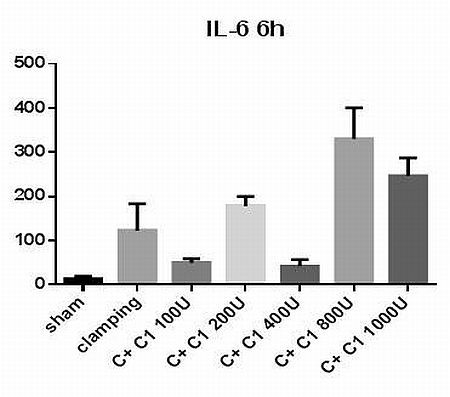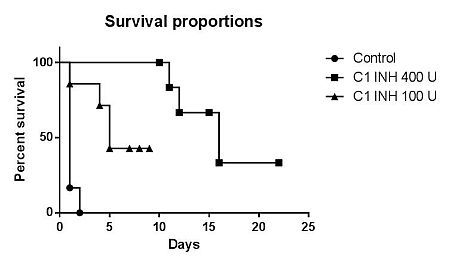Effect of C1-Esterase Inhibitor (Human) on Liver Ischemia-Reperfusion Injury and Regeneration, The
University of Massachusetts Medical School, Worceste
Meeting: 2013 American Transplant Congress
Abstract number: D1650
Liver ischemia-reperfusion injury (IRI) is a well-known cause of morbidity and mortality following liver transplantation (LT). Activation of the complement system, especially the lectin pathway, contributes to the pathogenesis of IRI injury. Effective treatment strategies aimed at reducing hepatic IRI injury and accelerating liver regeneration could offer major benefits in LT. We investigated the effect of C1-esterase inhibitor (human) [C1-INH], a known inhibitor of the lectin pathway of complement activation, on IRI and liver regeneration.
Male WT (C57BL6) mice were subjected to 30 minutes of 70% partial IRI with and without 70% partial hepatecotomy (PH). Prior to ischemia induction, the animals were pretreated with intravenous C1-INH (100, 200, 400, 800 or 1000 U/kg) or normal saline. IRI injury was evaluated using serum levels of alanine aminotransferase (ALT), serum interleukin-6 (IL-6), IL-1, TNF-alpha and specific markers of regeneration (Ki67, BrdU staining and PCNA) and hematoxylin and eosin staining.
Histology, serum IL-6, IL-1, TNF-alpha and ALT release revealed that C1-INH treatment (100, and 400 U/kg) provided significant protection compared with controls. Improved animal survival and increased number of BrdU positive cells were observed in C1-INH (100, and 400 U/kg) treated animals which underwent IRI/PH compared to control group. C1 INH (400 U/kg) was the most effective dose in both IRI+-PH. In this model, 400 U/kg of C1-INH appears to be the most effective dose.


This data indicates that complement plays a key role in IRI and liver regeneration. C1-INH represents a potential therapeutic strategy to reduce IRI and promote regeneration in liver transplantation.
Saidi, R.: Grant/Research Support, VIROPHARMA.
To cite this abstract in AMA style:
Saidi R, Rajeshkumar B, Walter O, Shariftabrizi A, Dresser K, Movahedi B, Jabbour N, Bozorgzadeh A. Effect of C1-Esterase Inhibitor (Human) on Liver Ischemia-Reperfusion Injury and Regeneration, The [abstract]. Am J Transplant. 2013; 13 (suppl 5). https://atcmeetingabstracts.com/abstract/effect-of-c1-esterase-inhibitor-human-on-liver-ischemia-reperfusion-injury-and-regeneration-the/. Accessed December 26, 2025.« Back to 2013 American Transplant Congress
